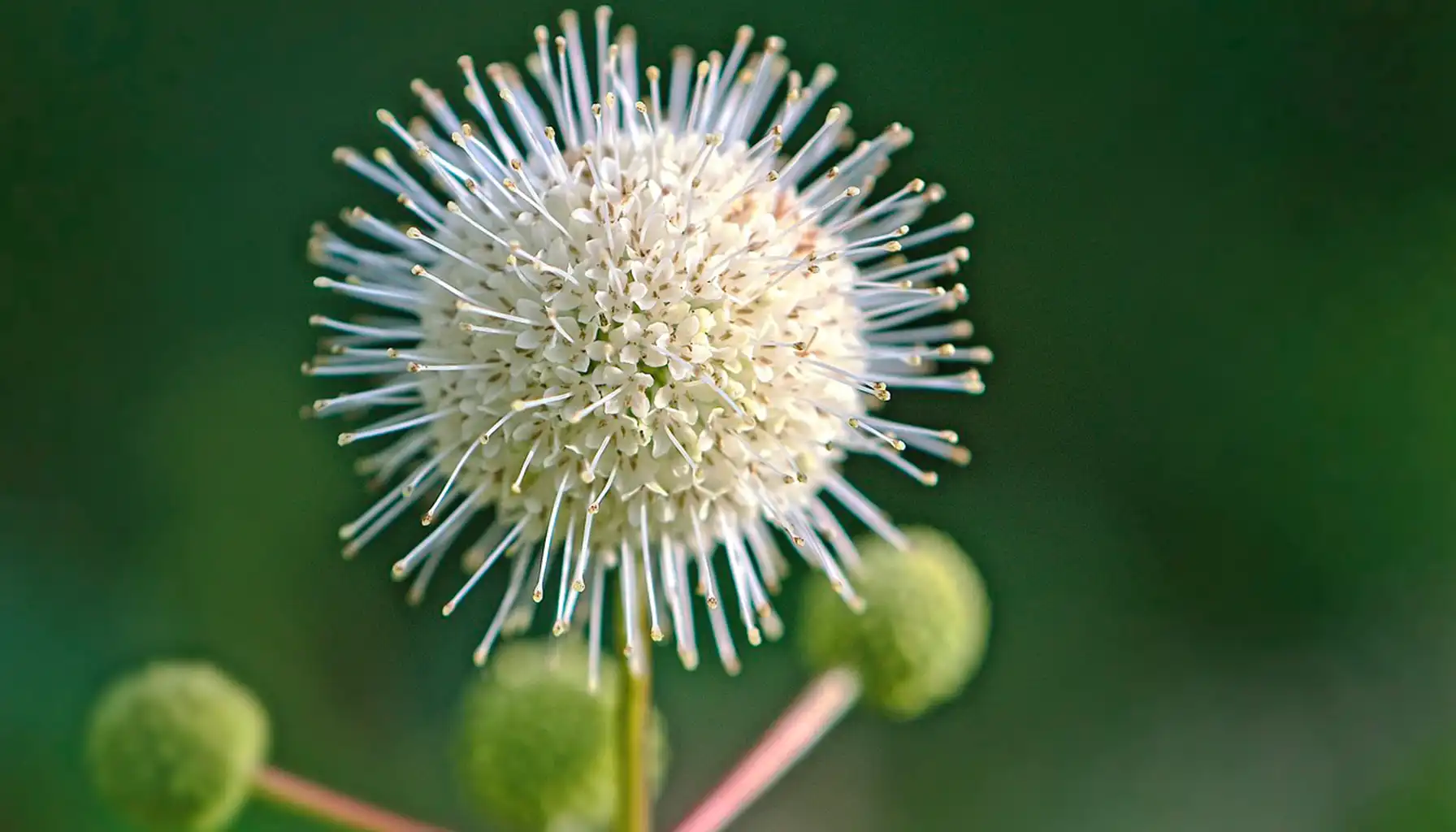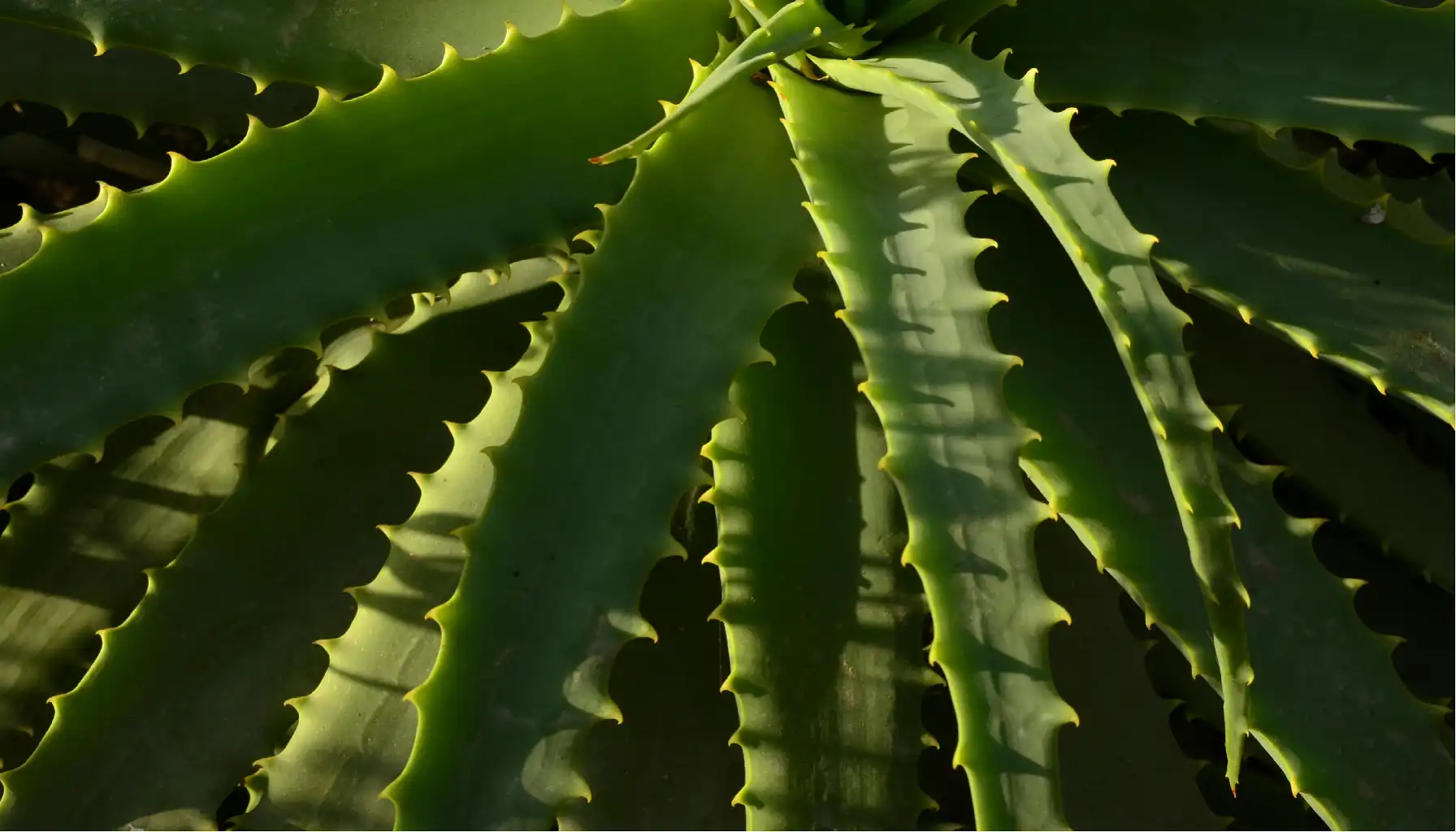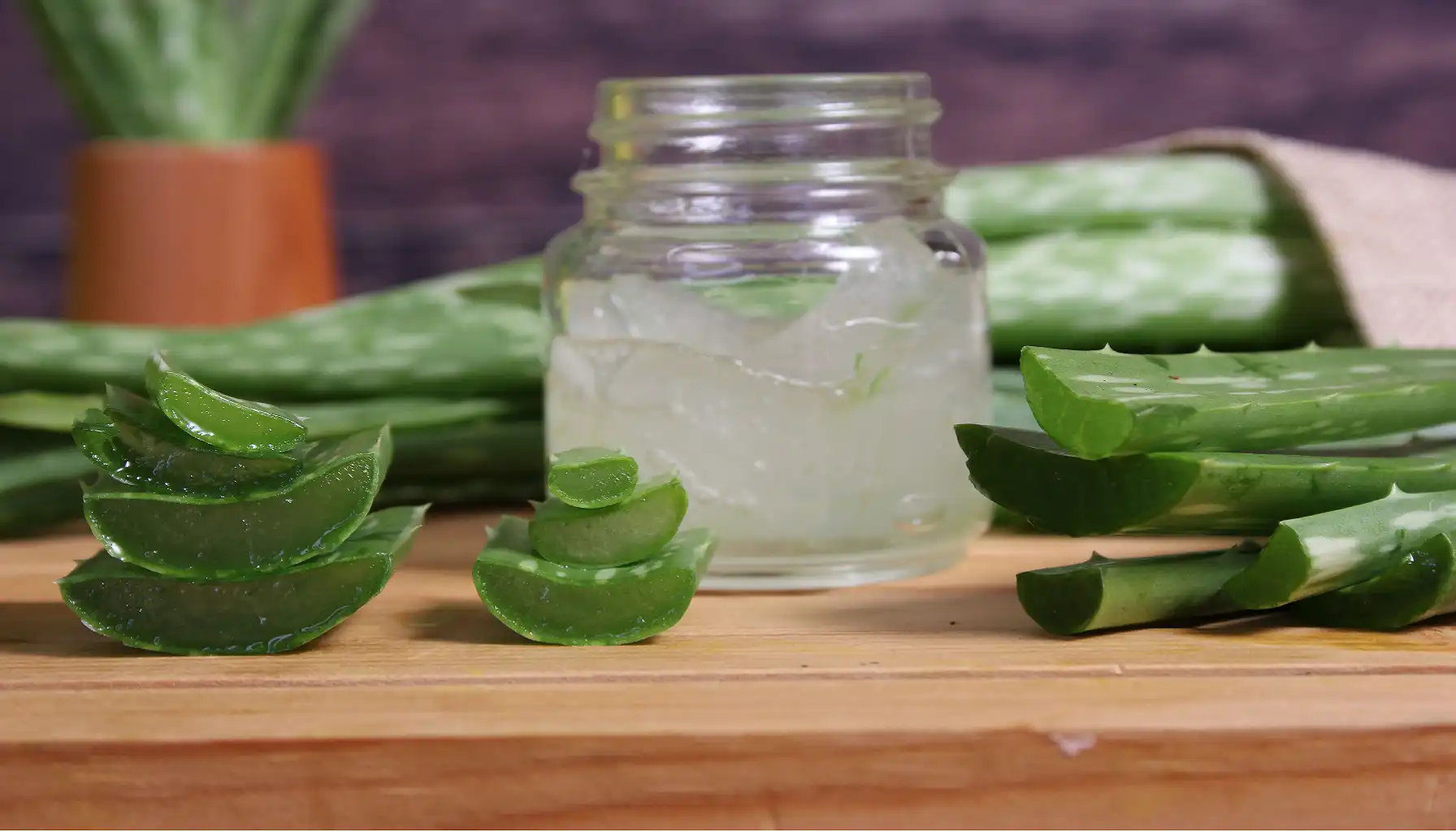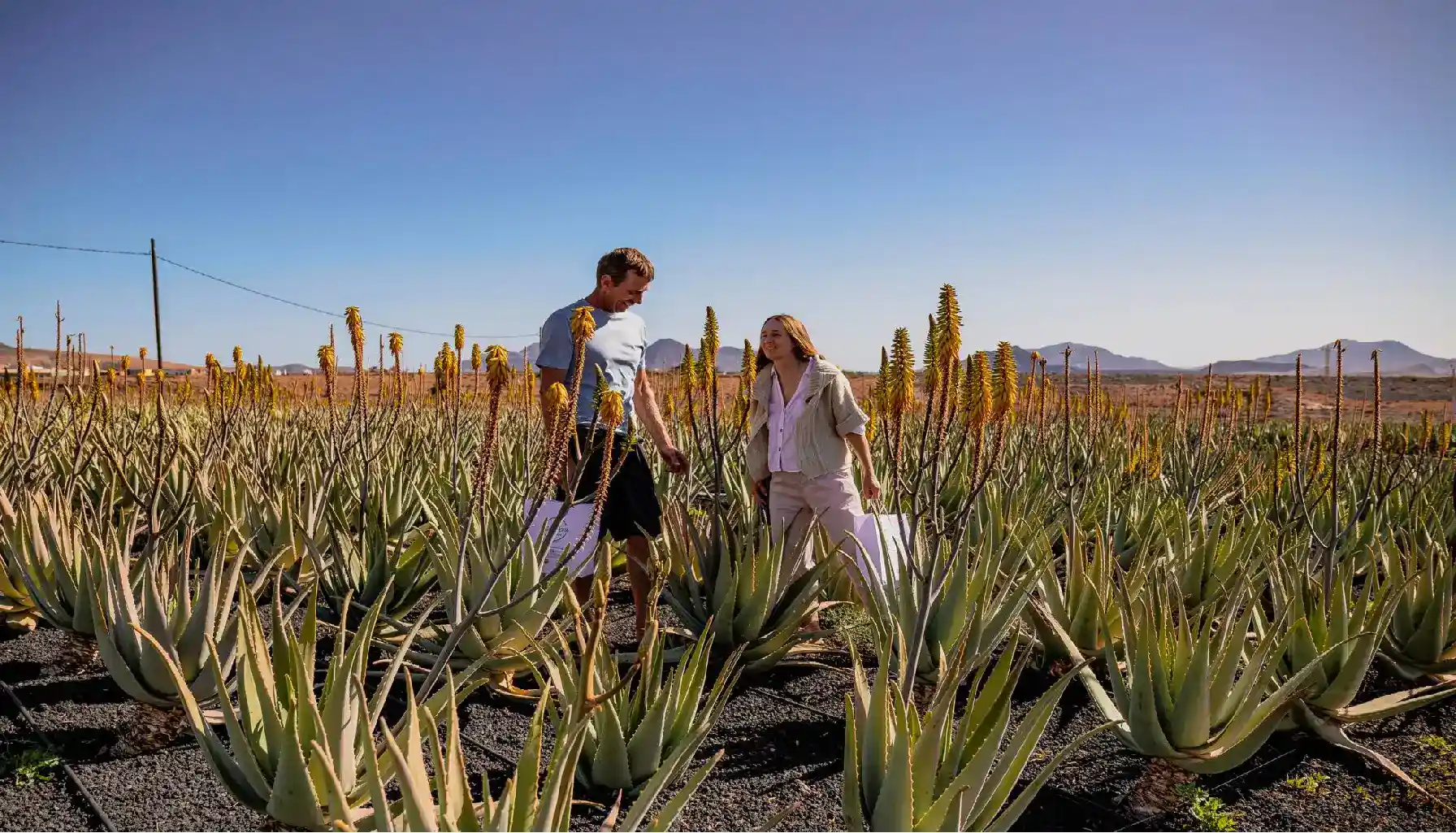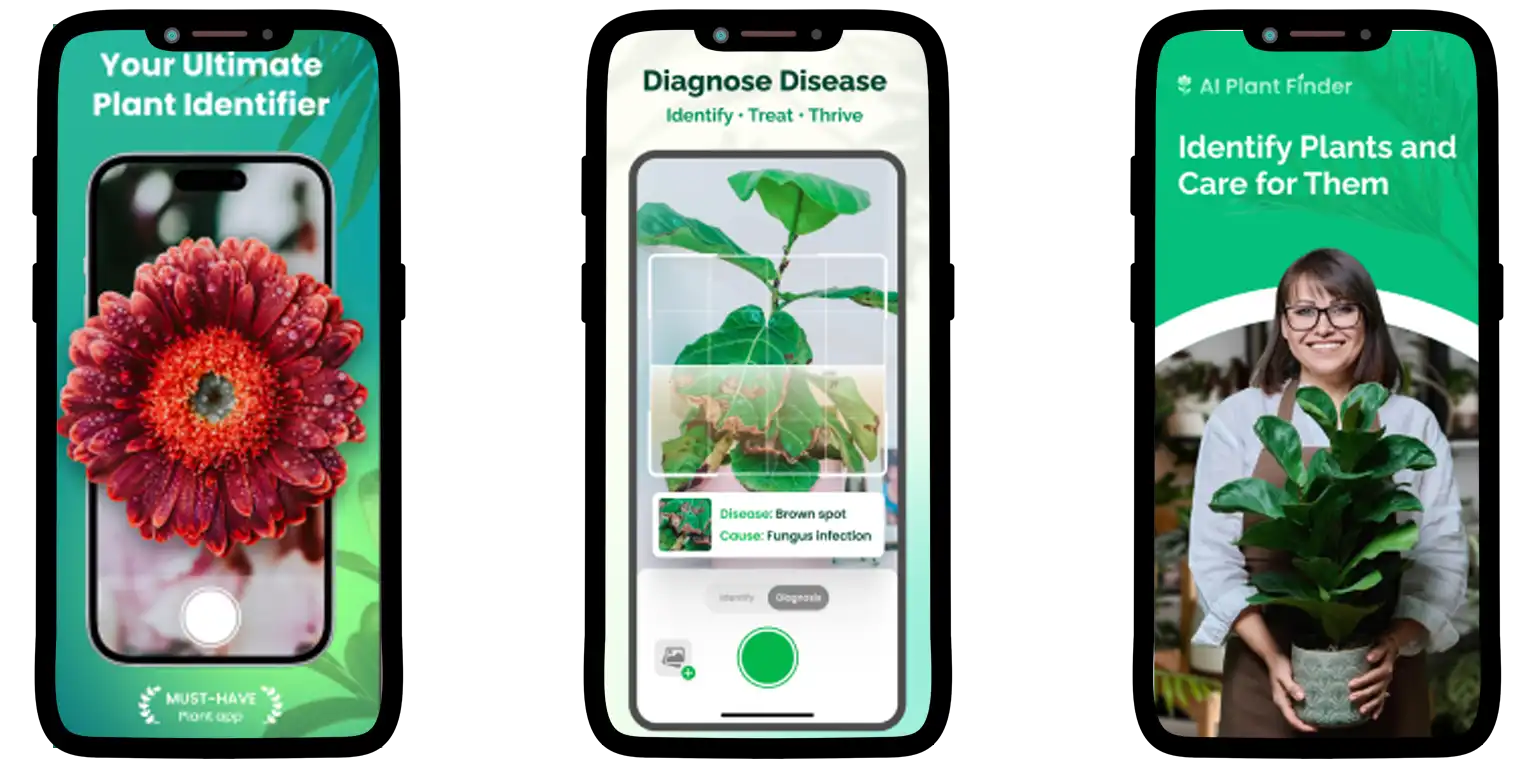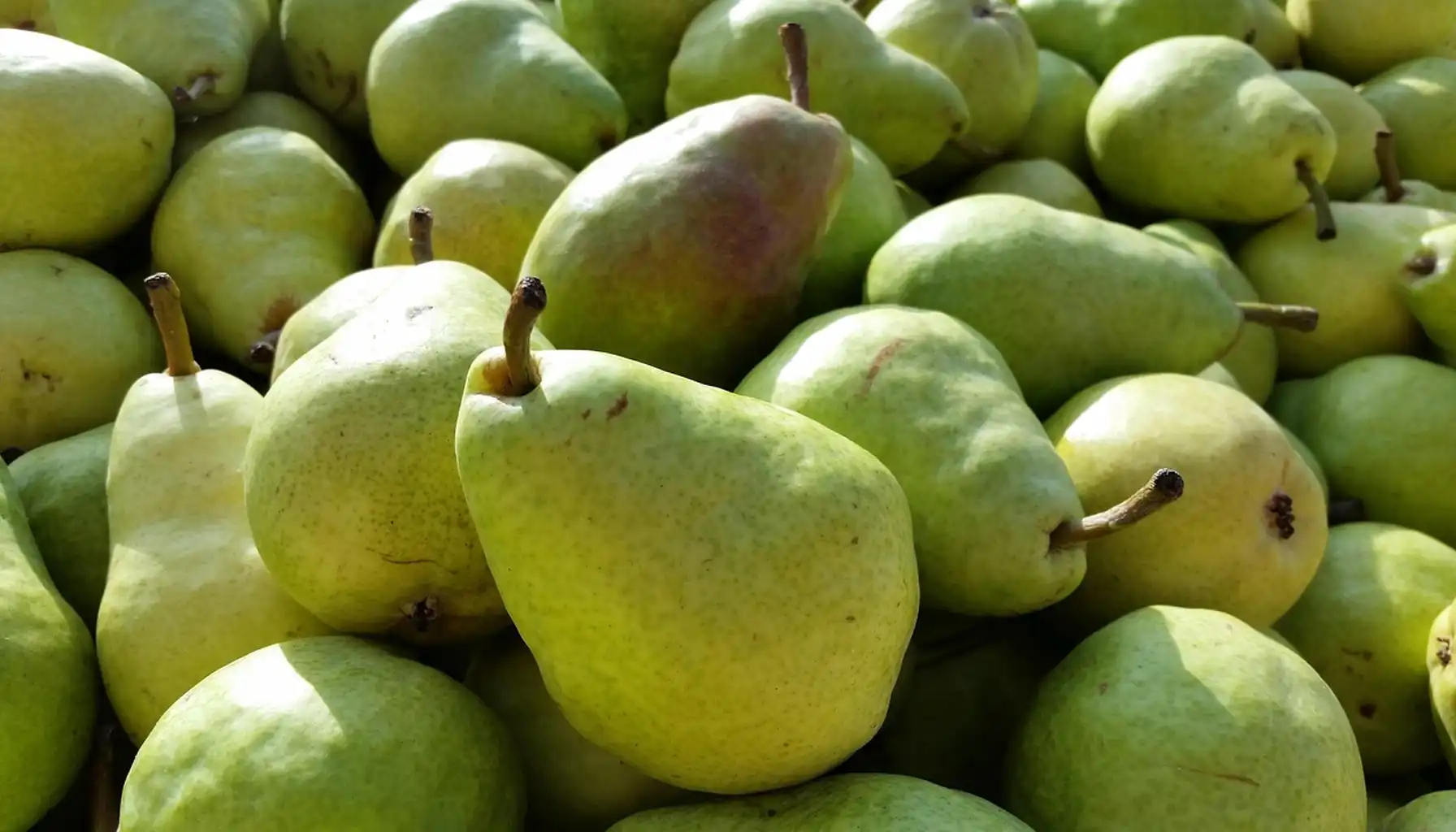It may sit quietly on a kitchen windowsill or bathroom shelf, far away from its habitat – a harsher terrain of arid deserts. Its appearance cannot lie: fleshy leaves and serrated edges, a thickened rosette structure built for conserving water and surviving the inexorable heat of its desert origins. Aloe vera is a true hero that may fit into any environment, no matter which variety has been chosen.
Should you be looking for a decent, beneficial, and simply nice-looking floral creation, aloe vera makes an ideal companion for you. So, how to take care of aloe vera plant? How toxic is it to pets, and how can a flower identification app make garden management easier?
What Is Aloe Vera?
Aloe vera is a popular succulent plant noted for its peculiar, spiky-rossette pattern and extensive healing properties. Its story dates back to ancient times, i.e., the era of the dry deserts of the Arabian Peninsula. For many years, it has been a source of two major substances, i.e., the inner gel of the leaves, rich in vitamins, enzymes, and polysaccharides like acemannan, and the yellow sap (or latex), found under the leaf's rind and full of potent compounds like anthraquinones, which have strong laxative effects when consumed.
How to use aloe vera plant? This has never been a pressing issue. In Ancient Egypt, for instance, aloe vera bore the name of the "plant of immortality", which was presumably utilized by Cleopatra and Nefertiti during their beauty rituals. The Greeks and Romans, on their part, recognized its medicinal value as the foremost property: both Alexander the Great and his mentor Aristotle reportedly sought out aloe to treat soldiers’ wounds in battle.
What are the main aloe vera plant benefits that can be leveraged by gardeners as soon as they have this species in their yards?
Soothes Burns
Heals Wounds
Moisturizes Skin
Reduces Inflammation
Treats Acne
Relieves Itchy or Irritated Skin
Promotes Hair and Scalp Health
Supports Digestive Health (with caution)
Boosts Skin Healing After Radiation
The Main Characteristics |
Scientific Name | Aloe vera (syn. Aloe barbadensis miller) |
Type | Succulent, evergreen perennial |
Family | Asphodelaceae |
Growth Habit | Stemless or short-stemmed; grows in rosettes |
Leaf Shape | Thick, triangular, fleshy |
Leaf Features | Serrated edges with small teeth Green to grey-green in color |
Leaf Structure | Composed of three layers: outer rind, yellow sap (latex), and inner clear gel |
Height | Typically 60–100 cm (24–39 in) |
Width/Spread | Expands through offsets ("pups") |
Flowering Season | Summer |
Flower Type | Yellow, tubular, pendulous flowers on a tall spike (up to 90 cm/35 in) |
Root System | Shallow, fibrous roots |
Hardiness Zones | USDA zones 9–11 (frost-sensitive) |
Native Habitat | Arid and semi-arid climates (originally Arabian Peninsula) |
Active Compounds | Acemannan (gel), aloin & anthraquinones (latex) |
Toxicity | Oral ingestion of latex can be toxic; gel generally safe for topical use |
How to Care for an Aloe Vera Plant?
Caring for aloe vera plant is not an easy task. However, gardeners are mainly aware of its resilience and low maintenance. To keep it healthy and thriving always means profound preparation, deep understanding of its needs, and patience in the first place. How often to water aloe vera plant? What does it need to stay alive and flourish?
Light Requirements
Just like many other succulents, it thrives in bright, indirect sunlight, though it can still handle direct light for some time. Anyway, light is everything, and it is vital for its healthy growth.
Tips:
Place near a south- or west-facing window for maximum light exposure.
When kept outdoors, ensure it gets at least 6 to 8 hours of sunlight every day.
Avoid too long exposure to the afternoon sun, which can scorch the leaves (exaggeration is always bad).
If natural light is limited, try using a grow light to supplement.
Watering & Humidity
Have you ever heard about the "soak and dry" method? This generally means that the plant should be watered thoroughly and then left to dry out completely before the next watering session. This is exactly what your aloe vera needs!
Tips:
Water profoundly yet infrequently (approx. every 2-3 weeks)
In winter, reduce watering to once a month or less.
Use a pot with drainage holes to avoid water buildup and consequent root rot.
Keep in mind that an aloe prefers dry air and does not need extra humidity.
Avoid misting (it is not a habitual occasion for a plant taken from the arid regions)
Related article: How Often Should You Water Your Plants? A Seasonal Guide
Soil & Potting
Foundation is the key. The right soil is crucial for the root health, as well as the overall development and its representation through the look. When choosing the soil mix, pay attention to the light, well-draining, and sandy options (e.g., cactus or succulent mix) - these are the most closely related types that may meet the needs of the plant.
By the way, one is always free to make their own soil mixture: it is only needed to have 2 parts regular potting soil, 1 part perlite or pumice, and 1 part coarse sand.
Tips:
Use a terra cotta or unglazed ceramic pot for the soil to dry faster.
Ensure an adequate amount and the size of the drainage holes to prevent standing water.
Repot every 2-3 years, or when the plant outgrows its container.
Further reading: Regulations of Soil: How Does pH Level Affect Plant Growth
Temperature & Environment
Since it is originally a desert plant, aloe vera obviously needs warm and dry conditions set around. Create a stable, temperature-controlled environment with no frost.
Optimal Conditions:
Ideal temperature range: 55 to 80°F (13 to 27°C)
Do not expose to temperatures below 40°F (4°C)
Keep away from temperature fluctuations
If grown outdoors, bring the plant inside before the first frost hits
Propagation
Aloe vera is a glorious natural creation – it is easy to propagate, especially through the pups (offsets or suckers in other words). So, how to plant aloe vera? What may it need to be born again?
Tips:
Wait until the pups are at least 1/5 the size of the parent plant.
Gently remove the entire unit from the pot and separate pups with the use of a clean knife or by hand.
Let the pups dry for a day or two to allow the cut ends to callus.
Replant pups in fresh succulent soil in small pots with drainage.
Water after a few days (do not do it immediately).
Pruning
How to cut aloe vera plant? Well, one should never "cut" a plant but to opt for a proper pruning technique. It is like an art to keep gardens alive and boost their prosperity for good. Always employ sterile, sharp scissors or pruning shears to cut the leaves at the base, closer to the stem.
Remove:
Yellowing or shriveled leaves
Mushy or spotted sections
Spent flower stalks after blooming
Do not get obsessed with pruning! This plant is slow-growing and relies on its leaves for water storage only.
Toxicity Explained
Can you eat aloe vera plant? It depends. You are free to eat the inner gel in small amounts, but the latex (yellow sap) is toxic and should be carefully removed before consumption.
Toxic Components Aloin and anthraquinones (found in the latex just beneath the leaf’s surface) are the primary toxic compounds. These can cause irritation when digested and disrupt normal bowel function.
| Symptoms of Poisoning | Pet Safety Tips Keep aloe vera plants out of reach of pets (and children, too). Sometimes, it might be reasonable to consider pet-safe alternatives like calathea, spider plant, or bamboo palm. Contact your vet or a poison control center if your pet ingests aloe. |
How to Identify a Healthy Aloe Vera Plant?
If you have a plant, it is always important to know what a healthy species should look like. How to identify a succulent plant that does not suffer? Let us review a few visual and physical clues that indicate the immaculate condition:
Firm, Fleshy Leaves: Healthy leaves are usually thick, plump, and full of moisture. Other characteristics may mean health problems.
Vibrant Green or Grey-Green Color: The plant should display a consistent color, without brown tips, yellowing, or blotches (which may indicate sunburn, overwatering, or pests).
Tight Rosette Formation: As we have covered before, the leaves should grow in a compact rosette pattern, following the symmetry (not the ideal one, though.
No Signs of Rot: A healthy plant will never have a mushy stem, blackened leaves, or a foul smell – these are considered the signs of root rot or fungal infection.
New Growth at the Center: Look for small new leaves forming in the center of the rosette, which may indicate active growing.
Upright Posture: Aloe should be anchored in the soil, not loose or toppling. Otherwise, there is no basis for consistent root development and further prosperity.
No Pests or Damage: Here is the most obvious statement. Avoid plants with signs of mealybugs, scale, or gnawed leaves. A healthy aloe will be clean – otherwise, this may invade your garden and ruin the health of those plants that have been free from infestation. Pest control is vital.
Use Technology to Help!
Plant care should not be daunting. It is a fascinating journey full of new explorations and insights to come – leave the most exhausting tasks to the digital tools, and rest assured, your garden will thrive. For your convenience, we are pleased to introduce a fine tool that combines all the necessary features under one digital roof – AI Plant Finder. Among its major instruments are:
Instant Plant Identification: Not sure what the benefits of aloe vera plant in home are? Snap a photo, and wait for the app to recognize your plant species within seconds to view its advantages, care needs, the main characteristics, and more.
Photo-Based Plant Diagnosis: Upload a photo to detect potential diseases, review causes, and learn more about treatment plans that work.
My Garden Tool: Keep track of all your plants, set reminders for watering, fertilizing, pruning, rotating, and gain control over your garden at once.
Water Calculator: How much does your plant need? Input your plant type (selected from your garden), pot variant, current temperature, and humidity. The app calculates the optimal water amount for you in an instant.
Light Meter: Utilize your phone to measure light intensity in a specific location. Results are shown in lux for you to determine if a spot provides enough light for your aloe vera to thrive.
Every living being needs to be cared for. Provide it with everything it requires to grow and witness its prosperity soon.
AI Plant Finder Related Posts
